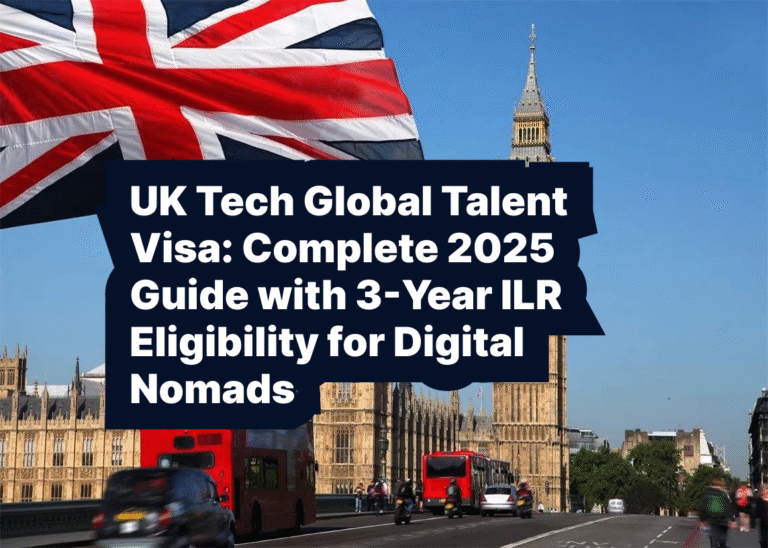Planning to relocate to Australia for work? This in-depth guide walks you through visa options, employer sponsorship, eligibility rules, documentation, FAQs, and practical tips—designed for African applicants aiming for skilled or semi-skilled roles.
Why Choose Australia to Work?
Australia isn’t just famous for its beautiful beaches and relaxed lifestyle — it’s also a top destination for skilled and unskilled workers from Africa and around the world. Here’s why thousands choose Australia every year to start a new chapter:
1. High Demand for Skilled Workers
Australia faces ongoing skill shortages across industries like healthcare, engineering, IT, trades, construction, agriculture, and hospitality. The government regularly updates the Skilled Occupation List (SOL) to invite workers in these critical roles, meaning better chances of securing a sponsored visa.
2. Competitive Salaries & Strong Worker Protections
Australia’s minimum wage is among the highest globally (over AUD 23/hour in 2025). Workers benefit from robust laws covering paid leave, superannuation (retirement savings), and safe working conditions. Skilled professionals can earn AUD 70,000–120,000+ annually, while many unskilled or semi-skilled roles still offer solid income and stability.
3. Clear Pathways to Permanent Residency
Programs like the Employer Nomination Scheme (Subclass 186) and Skilled Employer Sponsored Regional Visa (Subclass 494) give foreign workers a realistic route from temporary work visas to permanent residence, and eventually citizenship.
4. High Quality of Life
Australia consistently ranks among the world’s top countries for healthcare, education, safety, and environmental quality. Whether you live in vibrant cities like Sydney or regional centers like Townsville or Cairns, you’ll enjoy excellent public services and a multicultural community.
5. Family-Friendly Immigration
Most employer-sponsored visas let you include your spouse or partner and dependent children. Once settled, your family enjoys access to quality schools and healthcare, making Australia an attractive choice for migrants planning a long-term future.
6. Global Work Experience & Career Growth
Working in Australia can boost your resume globally. Employers value Australian work experience, and local industries often invest in training, certifications, and promotions — making it easier to build a professional career.
7. Safe, Stable & Multicultural Society
Australia is politically stable, welcoming, and proudly multicultural. Many African nationals find communities, churches, and cultural associations that help them adapt and thrive.
🌱 In short: Australia offers strong demand for workers, fair pay, family benefits, and a clear path to building a better life — making it a smart choice for African nationals seeking real career opportunities abroad.
Visa Types & Sponsorship Options
If you’re serious about working in Australia, it’s important to know which visas are most relevant, especially for applicants from Africa. Here’s a breakdown of the main employer-sponsored visas and how they work:
1. Temporary Skill Shortage Visa (Subclass 482)
- Who it’s for: Skilled workers whose occupations appear on the Medium and Long-term Strategic Skills List (MLTSSL) or Short-term Skilled Occupation List (STSOL).
- What it offers: Permission to live and work in Australia for up to 4 years (depending on occupation list).
- Key requirements:
- A valid job offer from an approved sponsor.
- Skills assessment (in most cases).
- Meet English language standards.
- Health and character checks.
- Benefits:
- Pathway to permanent residency after working for the sponsoring employer (via Subclass 186).
- Bring family members as secondary applicants.
💡 Ideal for IT professionals, engineers, nurses, chefs, tradespeople, and other skilled roles.
2. Employer Nomination Scheme Visa (Subclass 186)
- Who it’s for: Skilled workers nominated by an Australian employer for a permanent role.
- Streams:
- Direct Entry: For workers outside Australia or those without a Subclass 482 visa.
- Transition Stream: For workers who have held a Subclass 482 visa for at least 2–3 years.
- Benefits:
- Permanent residency from day one.
- Include spouse and dependent children.
- Requirements:
- Occupation on the Medium and Long-term Strategic Skills List (MLTSSL).
- Skills assessment and relevant experience.
- Competent English proficiency.
💡 Best suited for professionals planning to settle long-term and secure Australian citizenship.
3. Skilled Employer Sponsored Regional Visa (Subclass 494)
- Who it’s for: Skilled workers willing to live and work in regional Australia (outside major cities like Sydney, Melbourne, and Brisbane).
- What it offers:
- Up to 5 years of residence.
- Eligibility for permanent residency (Subclass 191) after 3 years.
- Benefits:
- Encourages migration to growing regional centers.
- Pathway to settle permanently with family.
- Requirements:
- Job offer from a regional business approved as a sponsor.
- Occupation on the regional list.
- Skills assessment and relevant work experience.
💡 A great option for skilled workers who want to live outside crowded cities and enjoy a relaxed lifestyle.
4. Designated Area Migration Agreements (DAMA)
- What it is: Regional agreements between the Australian government and local areas that allow employers to sponsor workers in roles not on the usual occupation lists.
- Why it matters:
- Can include semi-skilled and lower-skilled occupations.
- English requirements and salary thresholds may be more flexible.
💡 Useful for applicants in industries like hospitality, agriculture, aged care, and trades.
Sponsorship Basics: How It Works
- Employer becomes an approved sponsor: Must meet business and compliance requirements.
- Job nomination: Employer proves they need an overseas worker and that the position can’t easily be filled by an Australian.
- Visa application: The worker applies, submits documents, and meets health, character, and skills requirements.
- Visa grant: Once approved, you can travel and start work.
📝 Tip: Australian employers pay for most sponsorship costs, except optional extras like health exams or skills assessment fees. Be cautious of agents demanding large “placement fees.”
Which Visa is Best for You?
| Visa | Temporary / Permanent | Good For | Pathway to PR? |
|---|---|---|---|
| Subclass 482 | Temporary (up to 4 years) | Skilled workers on SOL | Yes, via Subclass 186 |
| Subclass 186 | Permanent | Skilled workers with employer sponsor | PR on grant |
| Subclass 494 | Temporary (5 years, regional) | Skilled workers willing to live regionally | Yes, via Subclass 191 |
| DAMA | Temporary / Transition | Semi-skilled & regional roles | Often yes |
✅ By understanding the visa types and sponsorship options, you can better plan your move to Australia, find real opportunities, and build a stable life abroad.
Eligibility Criteria
✔ Occupation & Skills
Your job must appear on the SOL, and you must pass skills assessments from official Australian authorities .
✔ English Language
Most employers require a valid test score (e.g. IELTS, TOEFL), especially for customer-facing roles .
✔ Health & Character Checks
You must meet health standards and provide police clearance certificates from countries you’ve lived in .
✔ Employer Requirements
Employers must be registered as a Standard Business Sponsor, prove they couldn’t fill the job locally (labor market testing), pay the SAF levy, and comply with work laws (Down Under Centre).
Step-by-Step Visa Sponsorship Process
Step 1: Employer Becomes Approved Sponsor
Businesses apply to Home Affairs to sponsor foreign workers under 482, 186, or 494 visas (Immigration and citizenship Website).
Step 2: Position Nomination
The role must be listed on the SOL, and the employer must justify hiring from abroad .
Step 3: Submit Visa Application
You provide documents such as passport, qualifications, English test results, character clearances, and health checks.
Step 4: Visa Grant & Work Start
Once granted, you can arrive in Australia and start employment. With Subclass 482/494, there are pathways to permanent residence (Australia Migrate).
How to Get Started (Tips for African Nationals)
1. Highlight Relevant Skills & Experience
Focus on occupations on the SOL—such as IT, engineering, health or hospitality. Gain local experience to stand out.
2. Prepare Key Documents
Ensure you have a valid passport, police certificate, English test results, degree certificates, and reference letters from employers.
3. Set Job Alerts
Use LinkedIn, Indeed, and industry job boards to search for vacancies including terms like “visa sponsorship”. Employers may scout via international job fairs ).
4. Demonstrate Value Before Sponsorship
Reddit users advise against upfront visa talk. Excel in initial casual or contract roles (such as on Working Holiday), and then seek sponsorship. One user wrote:
“don’t come in stating your expectations for sponsorship off the bat… prove your worth to themselves first” .
5. Work with Registered Migration Agents
Agents registered with OMARA are licensed to assist with visa processes. Find them via OMARA’s registry to avoid scams (Wikipedia).
Salary Expectations & Career Pathways
- Skilled roles like IT, engineering, or nursing often earn AUD 70k–120k per year.
- Hospitality and support roles under TSS typically range AUD 50k–80k, depending on hours and location.
- Regional roles under Subclass 494 or 186 offer added incentives and stability (Australia Migrate).
Frequently Asked Questions (FAQ)
Q: Is employer sponsorship realistic from offshore?
Some employers do sponsor direct hires, especially for critical skilled roles. But many prefer to first hire locals or onshore candidates. Proven performance in Australia helps your case.
Q: Can I change employers once sponsored?
Yes — visas like 482 allow change if new employer approves nomination. After 2 years, you may qualify to apply for ENS visa.
Q: How long does the process take?
Temporary visas (482, 494) often take 2–3 months; ENS permanent visas (186) take longer due to labor certification and processing.
Q: Can I bring family?
Most employer-sponsored visas allow spouse/partner and children under 18 to join under the same application.
Final Thoughts
Employer-sponsored work visas offer a reliable pathway to move, work and settle in Australia—especially for in-demand skilled roles. For African nationals, the keys are: identify eligible jobs, prepare proactively, and build demonstrated value. With effort and planning, you can leverage programs like Subclass 482, 494 or 186 to build a new life down under.







